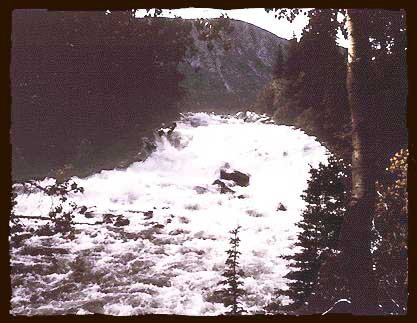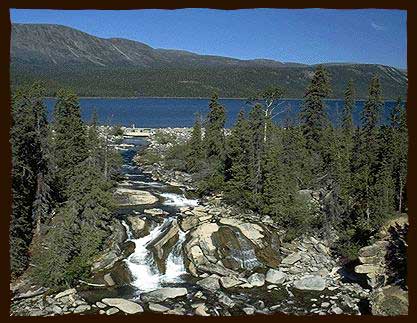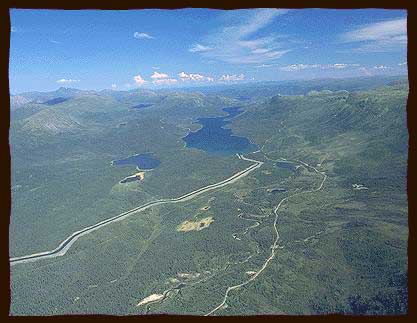Otter Falls
Nadèlin – Water Flowing Over – Otter Falls
Southern Tutchone
Nadèlin yū chu ätlą nadèlin kwä̀ch’e nà. Ätl’a gúch’än kedä̀dìńtsį nátthe. Äk’ān k’e äju chu kwäts’äshǟw nadèlin.
Kų̀ kwäzhät łä̀ki shèk’ā äla äyū. Łä̀ch’i kų̀ k’e Bill Jamieson kų̀ kwä̀ch’e nà.
Nadèlin yatān yū kä̀nàch’į dän kwädą̄y ch’äw łu ka chémèn chänàtl’ų̀. Yúk’e du łu ghàakégän.
English
Nadèlin (Otter Falls) was once known for its scenic beauty and was featured on the reverse of the old five dollar bill. Water flows out of Aishihik Lake, through Ädäts’ür Mǟn (Canyon Lake), over Nadèlin (Otter Falls) and along the Aishihik River before joining the Titl’àt Mǟn Tágà (Dezadeash River). When the hydroelectric dam was installed at the south end of Aishihik Lake, water was diverted away from the falls to flow through the turbine and into the West Aishihik River. Little water now flows over Nadèlin.
The old Southern Tutchone name for Canyon Lake is Ädäts’ür Mǟn, which means “lake where the strong wind chaps one’s face”. The earliest English name for the lake was Otter Lake, and some younger Southern Tutchone call it Krúda Mǟn “Otter Lake” after this English name.
There is an old village at the north end of Ädäts’ür Mǟn (Canyon Lake) where five or six houses once stood. There are two old cabins still at Nadèlin (Otter Falls). One belonged to Bill Jamieson. The Southern Tutchone people would stay at fish camps above Nadèlin (Otter Falls) in July and August, catching and drying whitefish and trout for their families, as well as pike for the dogs.



